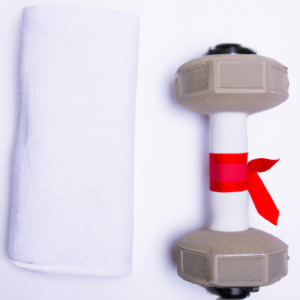The world of healthcare is undergoing a remarkable transformation, largely driven by the rapid evolution of technology. One of the most significant developments in this realm is the rise of health wearables—smart devices that can be worn as accessories or clothing to monitor various aspects of a person’s health and well-being. These unassuming gadgets have the potential to revolutionize how we approach healthcare, offering benefits that extend far beyond traditional medical practices.

Health wear
Evolution of Health Wearables
The journey of health wearables dates back to basic pedometers that counted steps. However, the real game-changer was the convergence of miniaturized sensors, wireless connectivity, and sophisticated data analytics. This convergence paved the way for a new generation of wearables that could monitor heart rate, sleep patterns, calorie expenditure, and more. Wearable technology evolved from being mere fitness trackers to becoming intricate health monitoring devices.
Benefits of Health Wearables
The allure of health wearables lies in their ability to provide real-time insights into our bodies. Imagine having a device that not only tracks your physical activity but also monitors your heart rate, sleep quality, and stress levels throughout the day. These wearables empower individuals to take charge of their health by identifying trends and patterns that might otherwise go unnoticed. Early detection of irregularities could potentially prevent more serious health conditions from developing.
Diverse Applications of Health Wearables
The applications of health wearables are remarkably diverse. For fitness enthusiasts, wearables offer a holistic view of their exercise routines and health progress. In the realm of healthcare, health wearables are a game-changer for remote patient monitoring. Patients with chronic conditions can be monitored without frequent hospital visits, allowing for timely interventions. Additionally, health wear hold promise in managing chronic diseases like diabetes by providing continuous glucose monitoring and personalized insights.
Challenges and Concerns
However, the rapid integration of health wearables into our lives also raises certain challenges. One of the foremost concerns is the security and privacy of the data collected by these devices. As wearables capture sensitive health information, ensuring the protection of this data from cyber threats is paramount. Furthermore, the accuracy of wearable-generated data is crucial for reliable medical insights. Regulatory bodies are grappling with setting standards to ensure the quality and reliability of these devices.
Innovation and Future Possibilities
Looking ahead, the fusion of health wearables with artificial intelligence and machine learning holds tremendous potential. Wearables could continuously learn from the data they collect, enabling them to provide personalized health recommendations. Imagine a wearable that not only monitors your vital signs but also predicts potential health issues based on your unique data patterns. Such predictive analytics could transform healthcare from a reactive to a proactive model.
Revolutionizing Doctor-Patient Relationships
Health wearables are poised to redefine the relationship between doctors and patients. With wearable-generated data, doctors can make more informed diagnoses and tailor treatment plans to individual needs. Patients, on the other hand, become active participants in their healthcare journey, armed with insights that foster meaningful conversations with their healthcare providers.
Impacts on Healthcare Industry
The integration of health wearables into mainstream healthcare could lead to a paradigm shift. By focusing on preventive care and continuous monitoring, healthcare systems could potentially reduce the burden of emergency interventions and hospital stays. This shift towards proactive care aligns with the industry’s move towards value-based care—a model that emphasizes maintaining health rather than simply treating illnesses.
High Authority Word: Telemedicine
One of the key synergies with health wearables is telemedicine. Telemedicine, or remote medical consultations, can be significantly enhanced by wearable-generated data. Doctors can assess patients’ conditions more accurately by incorporating real-time health metrics, enabling more effective virtual consultations and reducing the need for in-person visits.
Barriers to Adoption
Despite the promising potential, there are barriers to the widespread adoption of health wearables. Technological literacy is a significant hurdle, as some individuals may struggle to use and interpret the data provided by these devices. Furthermore, integrating wearable data with existing electronic health record systems poses technical challenges that need to be addressed.
Collaboration with Tech Companies
To overcome these challenges, collaboration between healthcare and technology sectors is essential. Tech companies bring expertise in design, user experience, and data analytics, while healthcare providers contribute medical knowledge and regulatory insights. Partnerships between these sectors can result in more user-friendly wearables with accurate and actionable health data.
Ethical Considerations
As health wearables become more ingrained in our lives, ethical considerations come to the forefront. Who owns the data generated by these devices? How can user consent be obtained and respected? Striking a balance between harnessing the benefits of wearable-generated data and protecting individuals’ privacy rights is an ongoing challenge that requires careful consideration.
The Role of Big Data
The wealth of data generated by health wearables presents a unique opportunity for population health insights. Aggregated and anonymized wearable data can help researchers identify health trends, track disease outbreaks, and inform public health policies. This valuable data resource could potentially contribute to improving global health outcomes.
User Experience and Design
A critical factor in the success of health wearables is user experience. These devices must be user-friendly, with interfaces that are easy to navigate and understand. Design plays a pivotal role in ensuring user engagement and adherence. By making wearables appealing and comfortable to wear, manufacturers can encourage long-term usage and meaningful health behavior changes.
Conclusion
The future of healthcare is undeniably intertwined with the potential of health wearables. These unassuming devices have the power to transform healthcare from a reactive and episodic model to a proactive and continuous one. Through real-time monitoring, personalized insights, and enhanced doctor-patient collaboration, health wearables offer a glimpse into a future where individuals are empowered to prioritize and manage their well-being proactively.